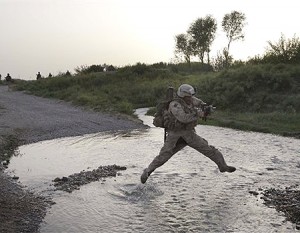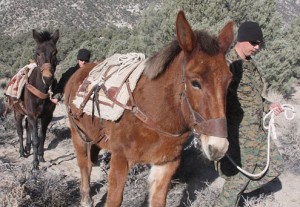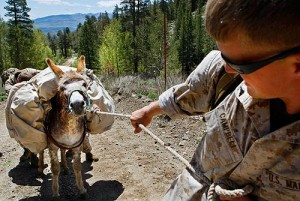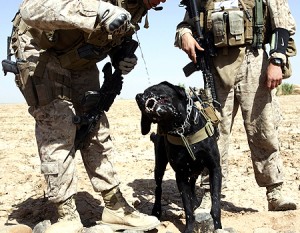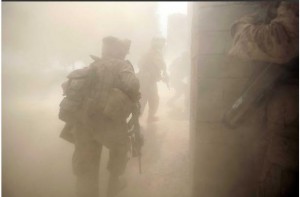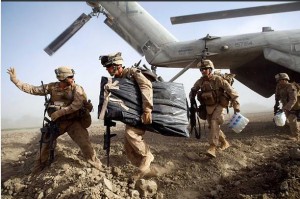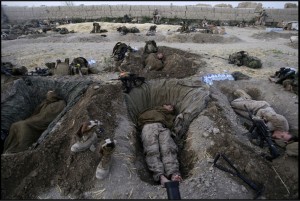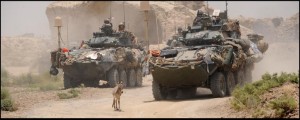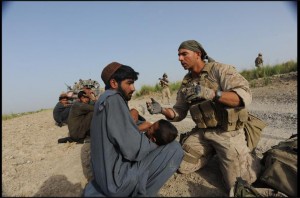The Marines Must Hold Helmand
BY Herschel SmithSpencer Ackerman points to a Washington Post article on the paucity of Afghan National Army troops and lack of viable Afghan National Police in recent Marine Corps operations in the Helmand Province.
“Six, you’ve got six,” Marine 1st Lt. Justin Grieco told his military police training team, counting the handful of Afghan police officers present for a patrol in this volatile region of southern Afghanistan.
The men filed out of the dusty compound gate into the baking afternoon sun. On the patrol, U.S. military police officers outnumbered the Afghans two to one — a reflection of the severe shortfall in Afghan security forces working with Marines in Helmand province.
President Obama’s strategy for Afghanistan is heavily dependent upon raising more capable local security forces, but the myriad challenges faced by mentors such as Grieco underscore just how limiting a factor that is — especially in the Taliban heartland of southern Afghanistan.
The extent of the push by 4,500 Marines into Taliban strongholds of southern Helmand will be determined, to a degree, by whether there are enough qualified Afghan forces to partner with and eventually leave behind to protect Afghan civilians. Brig. Gen. Lawrence D. Nicholson, commander of the Marine forces here, said urgent efforts are underway to dispatch additional Afghan forces to Helmand.
But here in Helmand’s Garmsir district — as in much of the south — Afghan forces remain few in number, as well as short of training, equipment and basic supplies such as fuel and ammunition. Some Afghans quit because they are reluctant to work in the violent south; others are expelled because of drug use. The Afghan troops here, heavily dependent on Western forces, are hesitating to take on greater responsibilities — and, in some cases, are simply refusing to do so.
The Afghan National Police officers mentored by Grieco’s team, for example, are resisting a U.S. military effort to have them expand to checkpoints in villages outside the town center of Garmsir as the Marines push farther south, taking with them the Afghan Border Police officers, who currently man some of those stations.
“Without the Marines, we cannot secure the stations,” said Mohammed Agha, deputy commander of the roughly 80 Garmsir police officers. “We can’t go to other villages because of the mines, and some people have weapons hidden in their houses. We can’t go out of Garmsir, or we will be killed.”
Spencer goes on to observe that:
So the operation was planned months ago and yet the Afghan security forces and civilian officials needed to follow on the Marines’ gains nevertheless appear to be absent or incompetent …
Now perhaps there’s furious behind-the-scenes negotiation to enlist more Afghan support. Indeed, if part of the point of the Helmand operation is to demonstrate to the Afghans — civilians and insurgents alike — that there’s a capable counterinsurgency strategy in place, it would hardly make sense to focus just on the clearing aspect of the strategy.
Spencer is knowledgeable on Afghanistan, so his surprise at the lack of viable ANA and ANP is surprising. The statements in bold above should be considered in the context of the previous data we have gathered:
Afghan villagers had complained to the U.S. Marines for days: The police are the problem, not the Taliban. They steal from villagers and beat them. Days later, the Marines learned firsthand what the villagers meant.
As about 150 Marines and Afghan soldiers approached the police headquarters in the Helmand River town of Aynak, the police fired four gunshots at the combined force. No larger fight broke out, but once inside the headquarters the Marines found a raggedy force in a decrepit mud-brick compound that the police used as an open-pit toilet.
The meeting was tense. Some police were smoking pot. Others loaded their guns in a threatening manner near the Marines. The U.S. troops ousted the police two days later and installed a better trained force they had brought with them on their recently launched operation into southern Helmand. The original force was sent away for several weeks of training the U.S. is conducting across Afghanistan to professionalize the country’s police.
And more data:
“The police are just worthless,” fumed Fulat Khan, 20, when Haight said his troops were backing up the local cops. “Anytime there is a fight in the community, the police just laugh and watch it. We need an organization or a number we can call so somebody can come here and help us.”
Add to this the problem that the ANA are drug-addicted and incompetent (it has been estimated that the ANA would lose as much as 85% of their force if drug testing was implemented), and the problem is that no matter how furiously we negotiate or gather qualified and competent ANA or ANP, there are none to be had. Obama’s exit strategy which relies on very rapid functional turnover to Afghan forces is doomed to failure if pressed without any modifications. The ANA won’t be ready until years down the road (2014), if then.
There is no tactical or logistical failure in the Helmand operations. It’s not that we simply failed to deploy the ready-made ANA and ANP to Helmand along with the Marines so that they could hold terrain that the Marines take. This meme is getting tiresome, and it’s time that CENTCOM acquiesce to the truth. It is that the Marines are in it for the long haul, just as it was with Anbar. There are no ANA or ANP to whom we can turn over. The Marines must hold Helmand.
